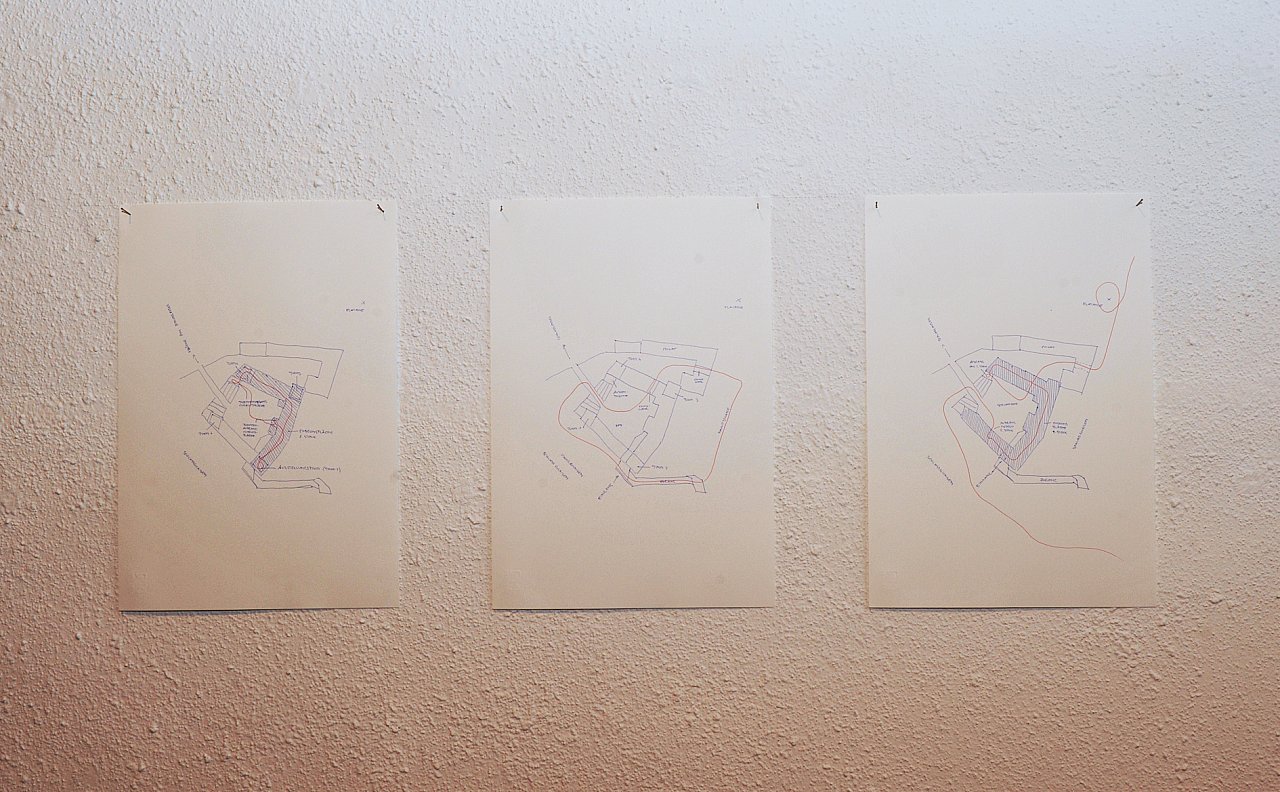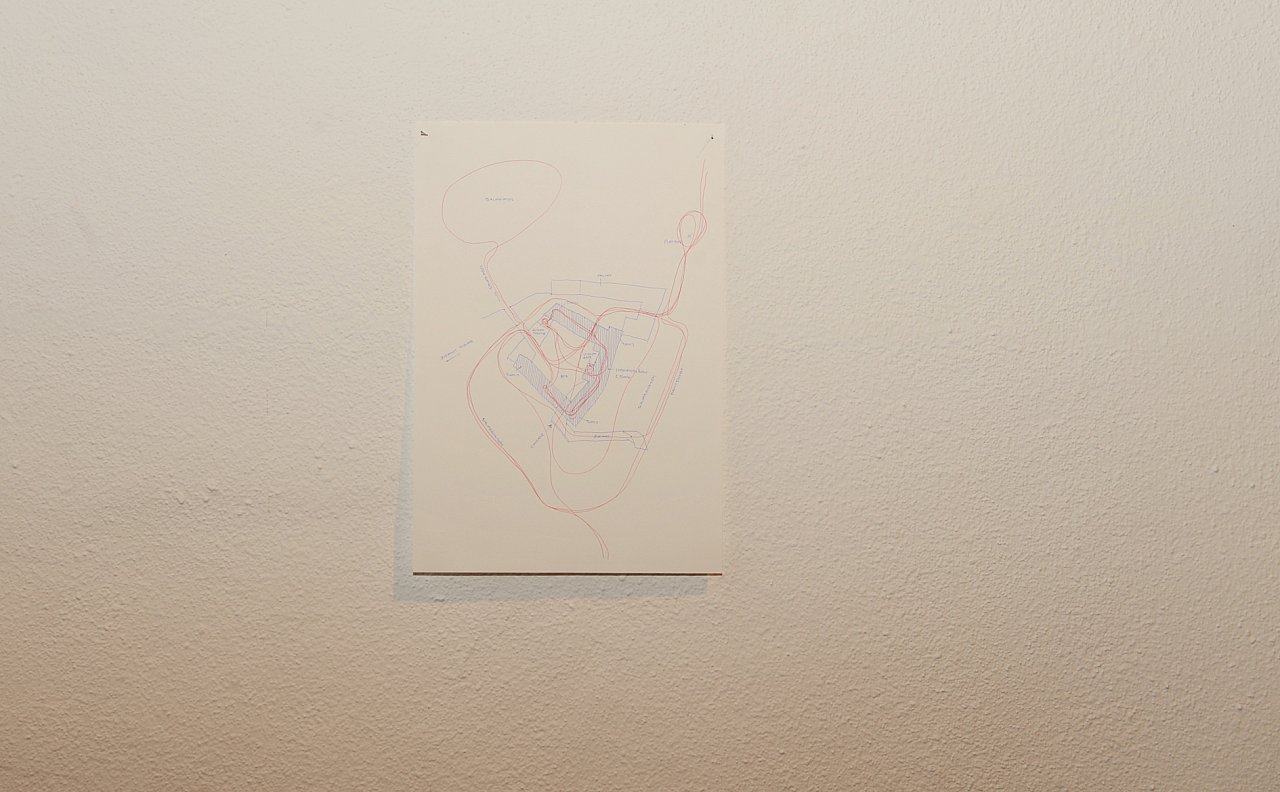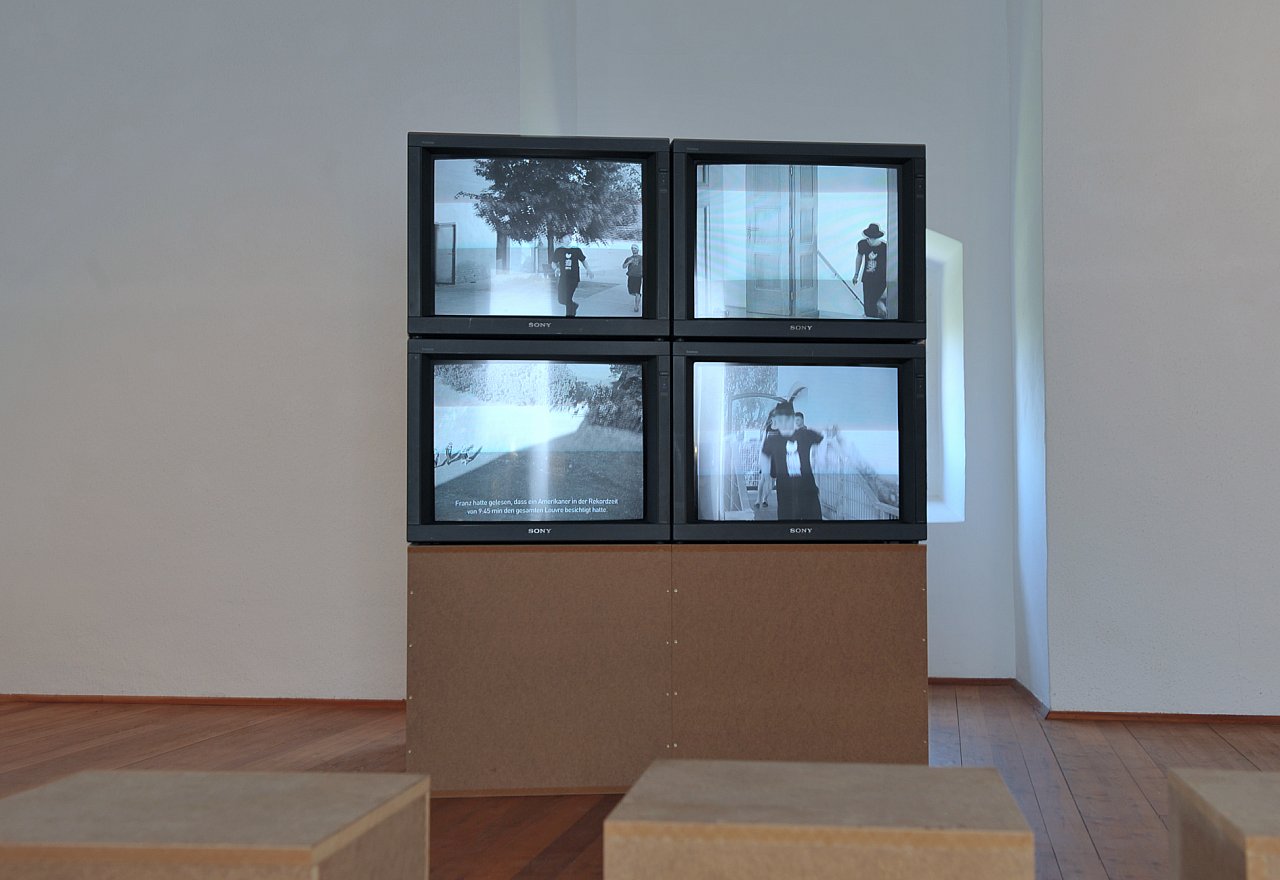Run through...
Annja Krautgasser
Annja Krautgasser
Exhibition Series
Alltagskultur und Gegenwartskunst im museumORTH
curated by Hilde Fuchs
2015 July 5 to November 1
Annja Krautgasser’s Run through… is a social intervention created for the town of Orth and the museumOrth. In it, she restages a famous scene from film history with the help of local participants. In Jean-Luc Godard’s film Bande à part (Band of Outsiders, 1964), the three protagonists run through the Louvre and break the record for the fastest tour of the museum. Krautgasser uses this symbol of youthful audacity and breaking conventions as a way of activating a small community.
The ephemeral and light-footed gesture branches out from the original context to become a symbol of exuberance, euphoria, and the promise of freedom. Our shared environment, which is often defined by regulations, prohibitions, and commercialization, thus becomes the site of a film-shooting and a happening involving the local population. While also referring to common cultural memory (the museum, and the history of film), Krautgasser thus creates a new portrait of the space and time of the town.
The work consists of various elements: The gesture of running, the reenactment of the scene, the participation of the local population, and the artist’s transfer or translation of it into the video installation. It reminds us of those artists in the 1960s who began to experiment with the studio and bodily actions in public space and who used plain gestures that became icons of contemporary art history because they were both simple and radical. Under the premise of the dematerialization of art and the desire to bring art and everyday life closer together, artists like Vito Acconci, VALIE EXPORT, Bruce Nauman, Adrian Piper, and Peter Weibel performed simple physical activities like walking, lying, running and so forth as part of their artistic practice. What happens, then, when a town begins to run instead of walk? Is it dangerous? Is it contagious? Is there something to be got from it? Running through the town makes it fluid and permeable, breaking down the borders between inside and outside.
In her stage directions for the three youths and the inhabitants of Orth, Krautgasser refers to the famous scene from film history when a gang does not walk through the sacred halls of art in the Louvre in awe, but rather runs through it with exuberance – uninhibited and visibly enjoying their stunt. The original scene is also shown as a reference in the exhibition space, along with drawings of the routes on maps of Orth.



Reenactments, or restagings, of events from history or art have become popular in everyday culture and in artistic projects over the last decades. Since the idea is to experience something that has already happened, we restage an event to make it accessible to our own horizon of experience. Krautgasser is interested in the transgression of the social rules that organize and structure our behavior in different public and private spaces, especially by a social group that is always identified with revolt: youths. Thus, while participation is both a desideratum of larger and smaller political contexts and an ideal in art in the past decades, it also comes with its own set of problems: Who controls the participation? Who is asked to participate? And who actually takes part?
In the exhibition space, the artist plays the video on four monitors that are arranged in a stack of two by two. There is a 40-second delay between the black and white video loop on each screen that enhances the dynamics of the performance and makes it possible to watch different segments of the video at the same time. Hence, the scenes also run through the sculpture itself, making the stack of screens dynamic and fluid while translating and materializing the impetus of the performance into the form of a portrait of Orth in space and time. (Hemma Schmutz)

